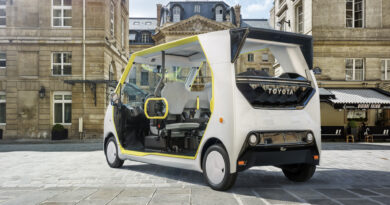Accessible electric vehicle charging – the challenge for the EV industry
Iain Coleman, head of EV charging at South Staffordshire Plc, talks about the importance of considering people living with disabilities in commercial EV charging infrastructure plans and installations…
Over the past year, the EV charging industry has sat up and started to take notice of the need for accessibility in the infrastructure being rolled out across the UK. Whilst we are still at the start of this journey, as an industry we need to consider whether we are doing enough, and whether many accessibility features are currently being seen as a wish list rather than an essential requirement.
It is estimated there are currently 30,000 public charge points in the United Kingdom, and by 2030 the government has targeted the industry to deliver 400,000 units to meet the expected demand from drivers adopting EVs.
According to Disabled Motoring UK, the charity which supports disabled drivers, passengers and Blue Badge holders, there are currently 2.3 million disabled motorists in the UK and this figure is expected to rise to 2.7 million by 2035. These figures are an absolute minimum as they do not include those with mobility impairments who are not registered as disabled or accessibility considerations for parent and child needs.
The legal position
Businesses and organisations are governed by the Equality Act 2010. To date, every client I have worked with on potential new charging point sites has been subject to this law. A mobility impaired person can quite rightly expect that positive steps are taken to remove any barriers that they would not otherwise face was it not for their disability. As far as is possible, a mobility impaired person should be able to have the same services delivered to them as someone without any disability. The Equality Act 2010 calls this the duty to make reasonable adjustments.
If it is reasonable to do so, then adjustments must be made to EV charging infrastructure to accommodate mobility impaired users. Each installation needs to consider, ensuring a range of disabilities are kept in mind, the following:
- How practical it is to incorporate changes to standard charging points; for example, having sufficiently long and wide spaces may not always be possible given site limitations
- If such changes would overcome the disadvantages mobility impaired people experience
- The size of the organisation providing the charging points
- The money and resources available for the project
- The cost of incorporating the required changes, which should ordinarily be at an acceptable level for most installations. However, it is important that these added costs do not deter organisations from rolling out electric vehicle charge points.
Practicalities
Businesses and organisations that want to install new EV charging infrastructure need to consider many aspects beyond the current hardware, environmental and power related obstacles that currently exist.
Parking Bays
Some vehicles require substantial side/ rear access to accommodate drivers and passengers with accessibility requirements, therefore bay width and length is an important consideration. Retrofitting electric vehicle charge points into existing car parks could result in a reduction in the overall number of bays, if accessibility is going to be fully addressed, but is important that the electric vehicle charging industry addresses the needs of mobility impaired users as far as is reasonable.
Charge Points
Hardware design must consider the height of both the sockets and any displays to ensure accessibility for all users. Kerb height and appropriate surfaces surrounding the charge point also must be addressed. Gravel, bark and other materials surrounding the concrete base for aesthetic purposes can often be seen, but it is important that the base is large enough for a wheelchair to move and turn. Barrier protection and road stops are often used to help protect the charge point from accidental damage. Ensuring these safety measures do not inhibit access to the charge points is essential.
Cables
For DC charge points with tethered cabling, the weight of the cable and its usability need to be assessed for all users. Cables are also often left trailing on the floor which may inhibit users in an adjacent space; some careful consideration should be given to try and minimize these issues.
Signage / Bay Marking
Drivers need to be able to find the appropriate bay for their needs. This might need a combination of floor marking and signage. This also helps ICE (Internal Combustion Engine) drivers find bays in which they should not park.
Lighting
When designing a new installation, lighting must be a key consideration for all drivers, passengers and any third parties that may be near the infrastructure; it is beneficial for signage, trailing cables and the charge point itself to be clearly visible at all times of the day and night.
Software
Whilst many chargers do not have contactless payment options and require an app or similar software solution, it is vital that this software is right for all users and offers immediate support.
Government policy
The EV charging Industry should increasingly include the above in all new installations. In the next few weeks, the British Standards Institute (BSI) is expected to announce accessibility standards for EV charge points across the country. BSI has been commissioned by the Department of Transport and Motability – a national disability charity. It is expected that the standards to be detailed by BSI will be guidance to the industry and EV drivers, providing clear definitions for public EV charge points, categorized as either:
- Fully Accessible
- Partially Accessible
- Not Accessible
The aim is to have more consistent standards so drivers can more easily find which charge points will meet their needs, regardless of their mobility. Now is the time for the industry to take the right steps to make sure that charging infrastructure is accessible for all – reducing the barriers for people living with disabilities to use and charge electric vehicles in public locations.






